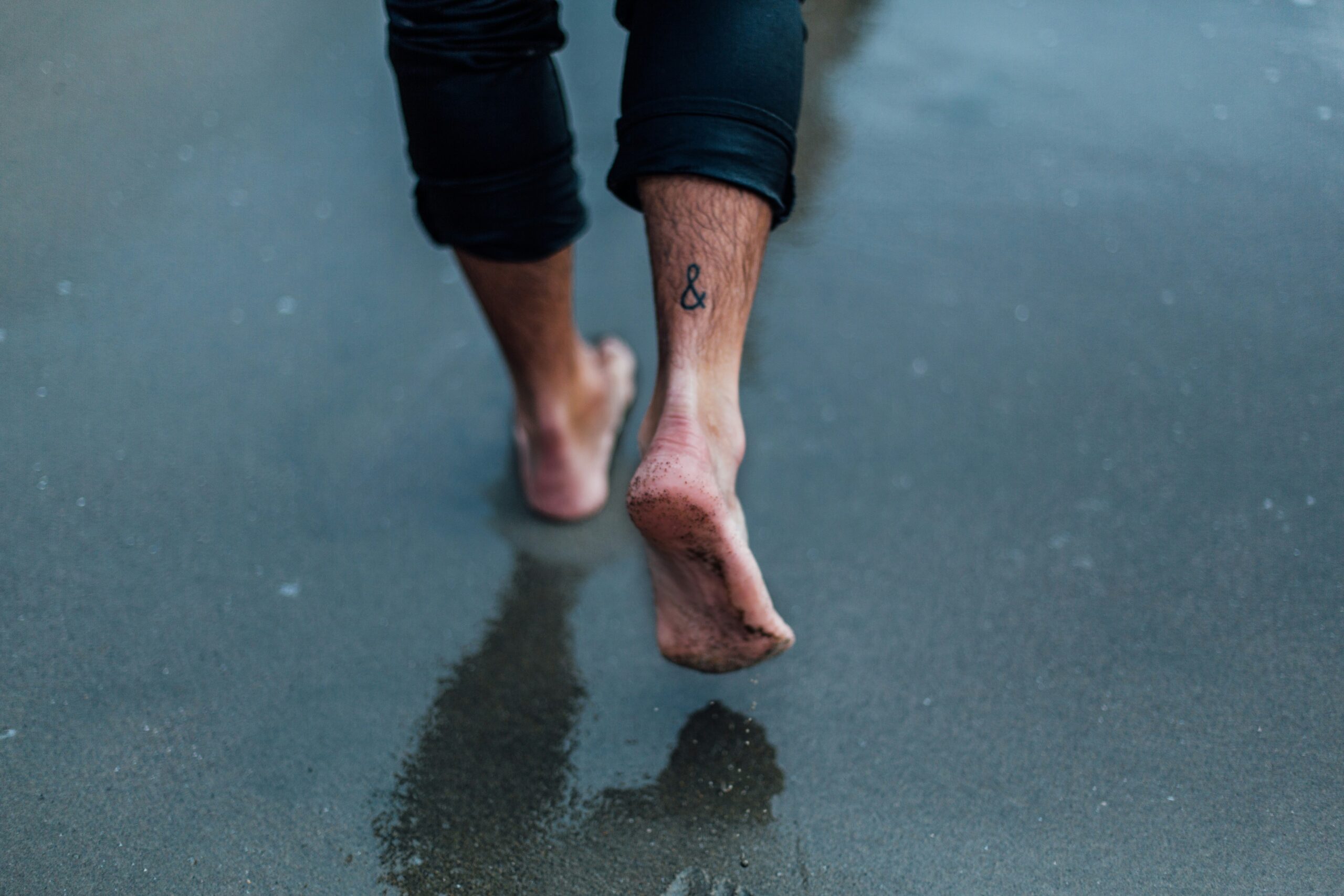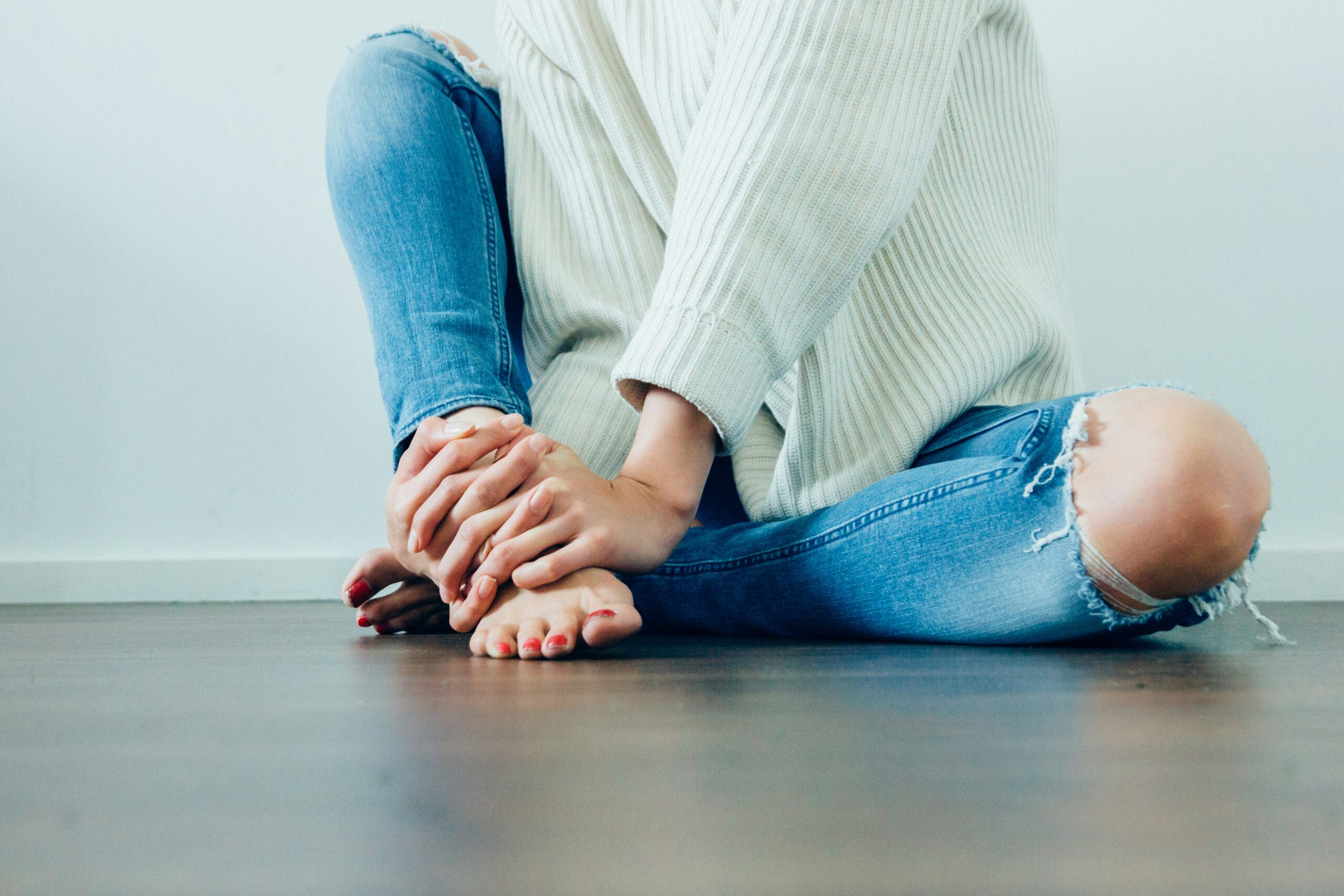Flat feet, therapeutically called pes planus, happen when a person's foot curve falls or collapses. It causes the whole sole to touch totally or nearly completely with the ground surface. It may happen simultaneously in just one foot or both feet, and its seriousness can run from mellow to exceptionally strong.
The human foot normally has an inward curve made by bones, ligaments, and tendons. The arch's work is vital for keeping body weight adjusted, especially when standing or strolling. It also works like a spring to absorb shock. However, for individuals with flat feet, the curve may not be created accurately during childhood. Moreover, it can collapse due to distinctive reasons later in life. Both circumstances cause the foot to be more straightened.
It could be shocking, but not all individuals with flat feet experience torment or distress. A few may have this and live without indeed noticing it, whereas others seem to feel irritated and confront troublesome circumstances because of the condition.
Flat feet are a normal thing happening to numerous individuals. Particularly in children![]() , it is normal for babies and little kids to have flat feet since their foot arches have not yet been created. More often than not, the improvement of these curves happens as they get greater, so frequently, this issue settles itself without requiring treatment. In a few individuals, the curve in their foot might be partially created. That can cause them to have flat feet for their entire grown-up life.
, it is normal for babies and little kids to have flat feet since their foot arches have not yet been created. More often than not, the improvement of these curves happens as they get greater, so frequently, this issue settles itself without requiring treatment. In a few individuals, the curve in their foot might be partially created. That can cause them to have flat feet for their entire grown-up life.

The reasons for flat feet come from diverse sources, like qualities, how an individual develops up, or the environment. Qualities are exceptionally critical; if other family individuals have flat feet, children may get this condition more likely. This interface talks about how the foot's structure, counting bones, ligaments, and tendons, can be influenced by hereditary characteristics.
Another imperative reason for having flat feet is that the foot curve does not develop legitimately during childhood. Sometimes, this curve doesn't completely frame, leading to a condition called flexible flat feet. In such cases, a curve could be obvious while sitting or standing on your toes but vanishes once you stand with your entire sole touching the ground.
Flat feet can sometimes occur in adults because the back tibial tendon gets weak or extended out. This extraordinary tendon is vital for keeping up the curve within the foot. It can become frail from excessive use, injury to this place, and conditions with swelling, like rheumatoid joint pain. Additional weight on your feet from being overweight may be a hazard for flat feet since it might make them drop or become weaker.
In case you've got diabetes![]() , this well-being issue can alter the nerves and blood vessels in your feet. That makes your foot structure weaker. Wounds like bone breaks or joint disengagements can cause flat feet by changing the shape of the curves in your foot.
, this well-being issue can alter the nerves and blood vessels in your feet. That makes your foot structure weaker. Wounds like bone breaks or joint disengagements can cause flat feet by changing the shape of the curves in your foot.
Each person's signs and side effects of flat feet can be very diverse, based on how extreme it is and whether there are any other related issues. A few people may not be involved in any side effects at all. They may not realize they have flat feet. On the other hand, for a few individuals, these side effects influence their standard of living.
Torment within the foot could be a. normal sensation, especially within the curve or heel portion of our feet. The torment could be caused by different foot positions and additional weight at certain focuses. It gets to be more serious if you stand for as well long, walk too much, or participate in energetic exercises. Lower leg sprains can cause swelling on the interior, generally since stress influences tendons and ligaments that offer bolster.
Flat feet can cause issues in several body parts, like knees or hips, and lower back torment. It happens since strolling and standing get changed. A few individuals may see their foot curve go level when they stand up, and the foot interior touches the ground on the off chance that an individual cannot stand on their toes or has tired feet more rapidly; this suggests flat feet.

Flat feet can cause numerous issues, particularly if they are not looked after or the levelness is exceptionally extreme. One primary issue is that you simply have more risk for foot and lower leg issues like plantar fasciitis. This problem brings painful swelling within the plantar fascia, which may be a thick tissue band running along the foot portion of your foot. It can produce Achilles tendonitis, recognized by torment and unbending nature within the ligament at the back of the lower leg.
Besides, flat feet can lead to issues such as bunions![]() or hammertoes. These issues happen when the bones and ligaments within the foot are not situated regularly. The endeavor to wear shoes comfortably can cause various torments and inconveniences. One more range for improvement is overpronation. That happens when the foot turns too far internally while strolling. It increases the hazard of wounds such as shin braces and stress breaks.
or hammertoes. These issues happen when the bones and ligaments within the foot are not situated regularly. The endeavor to wear shoes comfortably can cause various torments and inconveniences. One more range for improvement is overpronation. That happens when the foot turns too far internally while strolling. It increases the hazard of wounds such as shin braces and stress breaks.
Under more serious circumstances, flat feet might cause joint pain in the foot and lower leg joints due to additional use. This seems to result in nonstop torment, swelling, and lesser versatility. Moreover, having flat feet may cause issues related to harmony and relentlessness. It raises the chance of falling and getting harmed, particularly for more experienced grown-ups.
To appropriately get flat feet, a well-being pro ought to carefully look at them. This sort of master is ordinarily called a podiatrist or an orthopedic doctor. They start by gathering the complete therapeutic history of the patient to comprehend their side effects better. The specialist will ask about what issues the entity is confronting, when they started encountering these issues, how long they persevere, and what things tend to move forward or compound the pain. The family history is additionally checked since the condition may be hereditary.
When a medical professional analyzes your physical state, it is critical to get what can be off-base. The specialist looks at your feet after you stand and sit, observing the shape of each foot, the stature of its arch, and how the heel and toes are situated. The specialist will ask you to walk so they can watch in case there's anything bizarre in how you move or step along with your feet. This check-up regularly looks at the sum of twisting in your foot and lower leg, watching for signs such as intemperate pronation or related issues.
Often, specialists utilize imaging tests to ponder the foot's structure in a more nitty gritty way. X-rays are picked as often as possible since they offer clear pictures of bones, which assist doctors in distinguishing them if everything is found legitimately and recognizing issues such as distortions or joint pain. For more complex circumstances, specialists propose utilizing MRI or CT checks. These can see delicate tissues like ligaments and tendons to check for damage or irritation. This imaging method could uncover the seriousness of the issue and offer assistance in choosing which treatment strategy to utilize.
The wet foot test![]() , which isn't complex and does not initiate torment, is employed to watch the level of the curve in a person's foot. In this strategy, a person wets their feet and then steps onto a level surface like paper or a smooth floor. The engraved cleared out behind may show what kind of arch they possess:
, which isn't complex and does not initiate torment, is employed to watch the level of the curve in a person's foot. In this strategy, a person wets their feet and then steps onto a level surface like paper or a smooth floor. The engraved cleared out behind may show what kind of arch they possess:
If the impression shows up full without any internal bend, it indicates flat feet. If the internal bend is more emphasized, you've got typical or tall curves. This test is exceptionally valuable in recognizing adaptable flat feet.
Another strategy for determining flattened feet is to watch gait. In this strategy, pros look at how an individual strolls to distinguish any unordinary movements in their feet, such as intemperate rolling internal (overpronation). Walk investigation can be conducted by observing or utilizing special instruments that track the developments of the feet and where weight is applied to them. This information is valuable in comprehending the effect of flat feet on a person's strolling fashion, and it can help in choosing appropriate medicines.

The way to manage flat feet will depend on the condition's seriousness, whether there are any indications, and what causes it. For many individuals who have flat feet but don't feel torment or inconvenience (asymptomatic), perhaps no treatment is required. But when signs show up, treatment works to decrease torment, improve foot function, and halt further issues.
Orthotic devices![]() , like individual shoe embeds, are broadly utilized treatments for flat feet. They allow additional back-to-the-curve and help share weight over the entire foot. This makes the feet adjust superior and reduces the torment. Foot underpins or orthotics can be made particularly for individuals based on how terrible the level of feet is and other associated issues. A few people might discover that over-the-counter curve underpins are valuable even though they offer less back compared to custom orthotics.
, like individual shoe embeds, are broadly utilized treatments for flat feet. They allow additional back-to-the-curve and help share weight over the entire foot. This makes the feet adjust superior and reduces the torment. Foot underpins or orthotics can be made particularly for individuals based on how terrible the level of feet is and other associated issues. A few people might discover that over-the-counter curve underpins are valuable even though they offer less back compared to custom orthotics.
Physical therapy is exceptionally critical for taking care of flat feet, particularly when there's torment or not sufficient development. Physical advisors assist individuals by making their foot and leg muscles and ligaments more grounded. They, too, offer assistance feet to be more adaptable and make strides in how they work overall. You can do exercises like calf extends, heel raises, and exercises to make the back tibial ligament more grounded. Moreover, physical treatment makes a difference in improving adjustment and coordination, reducing the chance of falls and other wounds.
Solutions that specialists frequently allow can offer assistance to reduce the torment and swelling from having flat feet. Ibuprofen or naproxen, which are called nonsteroidal anti-inflammatory drugs or NSAIDs, can be valuable in cutting down pain and swelling. Some of the time, specialists say to utilize shots with a pharmaceutical called corticosteroids to form sharp torment or swelling superior. It is frequently chosen when other strategies don't work. These shots are ordinarily given specifically to the excruciating region by an individual prepared in pharmaceutical.
Surgery is, as a rule, the final choice for treating flat feet, and specialists propose it as it were when less complex strategies don't work and in case the entity has exceptionally genuine issues. Diverse surgeries are accessible, depending on what's causing the issue and how awful it is. Strategies can incorporate settling or moving ligaments, cutting and changing bones (known as osteotomy), or interfacing joints to fix deformations. The most objective of surgeries is to adjust the footway better, diminish torment, and get it working legitimately.
Numerous individuals with flat feet feel affirmed and can live ordinary, dynamic lives. They don't require pharmaceuticals or any other medications. Long-term circumstances for these individuals change essentially with how terrible their flat feet are if they have side effects and how great the treatment is. For those who experience side effects, simple medicines like extraordinary shoes (orthotics), workouts (physical treatment), and changing their way of life can make indications much superior and halt conditions from worsening.
On the off chance that leveled feet interface with issues like being overweight or having diabetes, overseeing these can be vital for getting way better. Consider it this way:
Losing weight might lower the stress on your feet. If you control diabetes well, you might avoid nerve harm that can cause foot issues.
Surgery can help diminish indications and settle genuine deformations. However, it takes a long time to feel better after surgery, and there are too many risks associated with it. Nevertheless, with appropriate care, most people with leveled feet can live soundly and effectively.